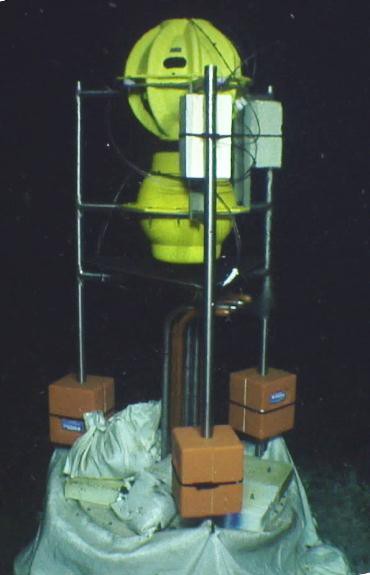Harnessing Energy from Deep Sea Hydrothermal Vents
Hydrothermal vents are formed by seawater that percolates through fissures in the ocean crust in regions where the Earth’s tectonic plates are spreading or colliding. The cold sea water is heated by hot magma and then emanates from vents in the seafloor. Water issuing from hydrothermal vents may reach temperatures of over 700° F. The water does not boil because of the extreme pressure at the ocean depths where the vents are located. Hydrothermal vents are recognized as rich sources of thermal energy. The hot water flowing from some vents contains thermal power of up to 60 MW. The thermal energy contained in hydrothermal vents make them potential sources for the generation of electric energy.
A thermal-to-electric conversion system can produce power to enable remote sea sensors, recharge autonomous underwater vehicles, and facilitate a variety of deep sea activities. Development of a power system for this application is challenging because the environment is extremely corrosive, and mineral precipitation and biological activity can obstruct critical surfaces. The system must operate reliably for long time periods without maintenance. Another challenge is that hydrothermal vents are found in ocean depths of 1500 m or more.
The Office of Naval Research (ONR) is funding expanded efforts to fabricate, install and conduct long-term evaluation of energy conversion technologies in the undersea environment. Research goals include determining the optimal configuration and materials that will avoid biological/mineral fouling and corrosion, and withstand hydrostatic pressure for long-term deployment potential. The benefits of such alternative energy sources include expanding the range and endurance of undersea systems. A reliable undersea energy source would also reduce the amount of internal energy storage required for unmanned underwater vehicles, thereby maximizing their payload potential. The need for battery resupply programs would also be eliminated.
Creare Turbo-Rankine Power System for Hydrothermal Vents
Creare has been chosen by ONR to develop a turbo-Rankine power system optimized for hydrothermal vents. Our system consists of discrete components packaged to fit optimally within a simple containment structure and around adjacent features and subsystems. Continuous fluid flow within the system communicates directly with the heat source and heat rejection environment, without intermediate flow loops or large thermal structures.
Creare has a long history of developing advanced turbomachinery, heat exchangers, and thermodynamic systems for challenging aerospace and terrestrial applications. During an initial project, we optimized design trades, completed a preliminary design, and tested prototype heat exchangers on hydrothermal vents. We are now preparing to test a complete prototype system.
